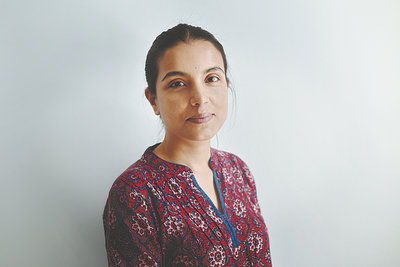Desert town in China retains old India link

Satarupa Bhattacharjya [Photo provided to China Daily]
The caves contain paintings of 49 female donors (to art), including a Uygur princess, Li said.
According to the UNESCO website, "Dunhuang art is not only the amalgamation of Han Chinese artistic tradition and styles assimilated from ancient Indian and Gandharan customs, but also an integration of the arts of the Turks, ancient Tibetans, and other Chinese ethnic minorities."
From the Northern Wei Dynasty (386-534) to the Mongol-led Yuan Dynasty (1271-1368), the caves of Mogao "played a decisive role in artistic exchanges between China, Central Asia and India".
Chinese, Tibetan, Sogdian, Khotan, Uygur and even Hebrew manuscripts were found within the caves, the website says.
The Library Cave, discovered in 1990, lodged tens of thousands of manuscripts.
A six-syllable mantra in ancient Tibetan characters etched on a black stone slate and a woodcut block with rune in Sanskrit, both from the Yuan era, found later at other archaeological sites in China, are among relics displayed at Dunhuang Museum.
"The 'Mogao spirit' is hard to define," Li said.
Contact the writer at satarupa@chinadaily.com.cn





 Print
Print Mail
Mail
